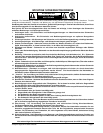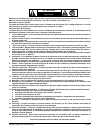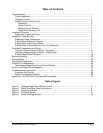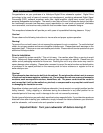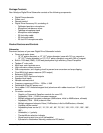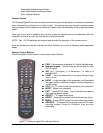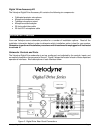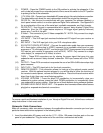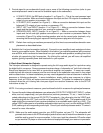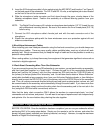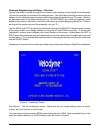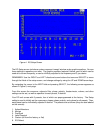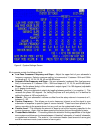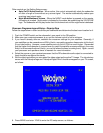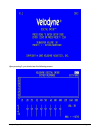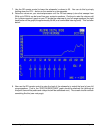
Velodyne Digital Drive User’s Manual Page 6
2. Provide signal to your subwoofer through one or more of the following connections (refer to your
receiver/processor owner’s manual for available inputs to the subwoofer):
a. LFE INPUT (RCA, the RED jack at location 11 on Figure 2) — This is the most common input
cable connection. Make a connection between this input and the LFE output or the subwoofer
output of your receiver or processor;
OR
b. LFE INPUT (XLR, location 6 on Figure 2) — Make a connection between this input and the
balanced LFE outputs of your receiver or processor;
OR
c. INPUT, LEFT and RIGHT (location 11 on Figure 2) — Make a connection between these
inputs and the stereo outputs of your receiver or processor;
OR
d. SPEAKER-LEVEL INPUT (location 14 on Figure 2) — Make a connection between these
inputs and the left and right speaker connections on your receiver or processor. Make this
connection (Figure 2) by either inserting speaker wire into the correct polar terminals, or by
removing the banana plug jack caps and inserting banana plug wire into the jacks.
NOTE Refrain from routing connections permanently at this time to accommodate subwoofer room
placement as described below.
3. Establish the Line-level connection (optional). Connect to a pre-amplifier’s main outputs and return
them to your amplifier inputs. When installed in this fashion, your satellite speakers will be crossed
over at 80Hz, which removes the lower bass from your amplifier and speakers, enabling them to do
a better job reproducing high frequencies. By utilizing this method, you will have a bi-amplified
system, gaining improved power and headroom for your system.
A Word About Subwoofer Outputs
The Velodyne subwoofer is designed to operate using the full range audio signal for input when using
the digital built-in crossover. Some processors/receivers have a “subwoofer out” jack that is internally
filtered and designed to be used with a conventional amplifier and speaker. In some rare cases,
combining both an external crossover and the one internal to the subwoofer may result in low output
and increased noise. In these installations you may need to bypass the internal crossover in either the
processor or Velodyne subwoofer. In some installations, simply setting one crossover to a higher
frequency (such as 120Hz) will restore maximum performance. To bypass the subwoofer’s internal
crossover when the unit is being fed a low pass signal from another crossover, refer to the SETUP
instructions at step 14.
NOTE: If not using an external crossover, you should use the built-in crossover for optimal performance.
4. Connect the audio/video cable between your subwoofer (EQ OUTPUT VIDEO/LEFT/RIGHT – yellow,
white, and red, respectively) and your electronics (receiver, processor, TV, etc.). Insert the color-
coded cable plugs into the correct EQ OUTPUT receptacle – the yellow plug into the VIDEO jack,
the white plug into the LEFT jack, and the red plug into the RIGHT jack. The opposite ends of this
cable should be connected to your receiver/processor to an available audio input (e.g. AUX). The
yellow VIDEO cable goes to an available composite video input (e.g. aux), and the white/red AUDIO
(L&R) cables go to a corresponding audio input. Consult your receiver/processor and/or TV owner’s
manual for more information.
NOTE: Make sure the audio output goes into your AUDIO system, not your TV! The subwoofer will
generate test tones via the EQ Audio output jacks that are used to match the subwoofer to your
satellites and to correct for room anomalies. In this case, treat the subwoofer EQ audio output
as you would a CD player or other audio device to be played through your receiver or processor.



